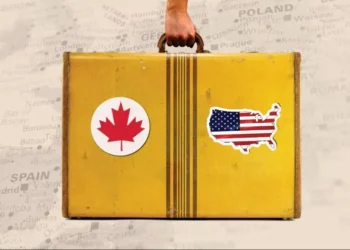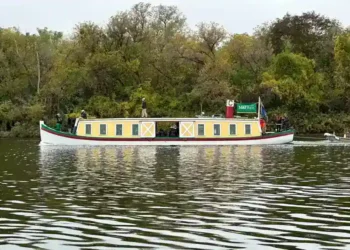Nepal Plans to Restrict Everest Permits to Experienced Climbers
In a bid to improve safety and reduce overcrowding, Nepal is proposing a new law that would restrict permits to climb Mount Everest to those with prior experience on at least one of the country’s 7,000-meter (22,965 ft) peaks.
The country, known for its thriving tourism industry centered around trekking and mountaineering, has faced growing criticism for issuing permits to inexperienced climbers, which has contributed to dangerous congestion on the world’s highest peak, Everest (8,849 meters/29,032 feet).
Overcrowding in what’s known as the “Death Zone” — an area below the summit with dangerously low levels of oxygen — has led to deadly consequences. In 2023 alone, 12 climbers lost their lives, and five went missing on the slopes of Everest, with the government issuing 478 permits that year. This follows a troubling trend, with eight fatalities recorded in 2022.
Under the proposed law, climbers would need to prove they have previously scaled a mountain in Nepal that reaches at least 7,000 meters in height to qualify for an Everest permit. The new regulations would also require that both the sardar (local staff head) and the mountain guide accompanying the climbers be Nepali citizens.
The law, which has already been introduced to the National Assembly, is expected to pass, given the ruling alliance’s majority in the upper house of Parliament.
However, some international expedition operators have expressed concerns. Lukas Furtenbach of Furtenbach Adventures, based in Austria, argues that the rule should extend beyond just Nepalese peaks. “That wouldn’t make any sense. We should include other mountains close to 7,000 meters, like Ama Dablam, Aconcagua, and Denali, as part of the qualification,” he said. Furtenbach also stressed the need for qualified guides from all over the world, citing the shortage of Nepali mountain guides with the required expertise.
“It’s crucial for guides to hold qualifications such as the IFMGA (International Federation of Mountain Guides Associations), regardless of their nationality,” he added.
Garrett Madison of Madison Mountaineering, a US-based expedition company, suggested that any 6,500-meter peak would be a more practical benchmark for Everest permits. “It’s challenging to find suitable 7,000-meter-plus peaks in Nepal,” Madison said.
Nepal is home to more than 400 mountain peaks open to expeditions, with 74 of them surpassing the 7,000-meter threshold. However, most of these peaks are not as popular among climbers, leaving only a handful of 7,000-meter mountains regularly attracting attention.
Tashi Lhakpa Sherpa, a seasoned climber with eight summits of Everest under his belt, pointed out that only a select few 7,000-meter peaks are commonly used by climbers for preparation. “The majority of the high-altitude mountains aren’t frequented by many,” he explained.
As the debate over the new law continues, the goal remains clear: reduce overcrowding and ensure safer climbs on Everest — one of the most perilous and iconic mountains in the world.
Source: CNN – Nepal to restrict Everest permits to climbers who have scaled another 7,000+ foot Nepali mountain
This article was rewritten by JournosNews.com based on verified reporting from trusted sources. The content has been independently reviewed, fact-checked, and edited for accuracy, tone, and global readability in accordance with Google News standards.
Stay informed with JournosNews.com — your trusted source for verified global reporting and in-depth analysis. Follow us on Google News and BlueSky for real-time updates.
JournosNews.com follows Google News content standards with original reporting, verified sources, and global accessibility. Articles are fact-checked and edited for accuracy and neutrality.












